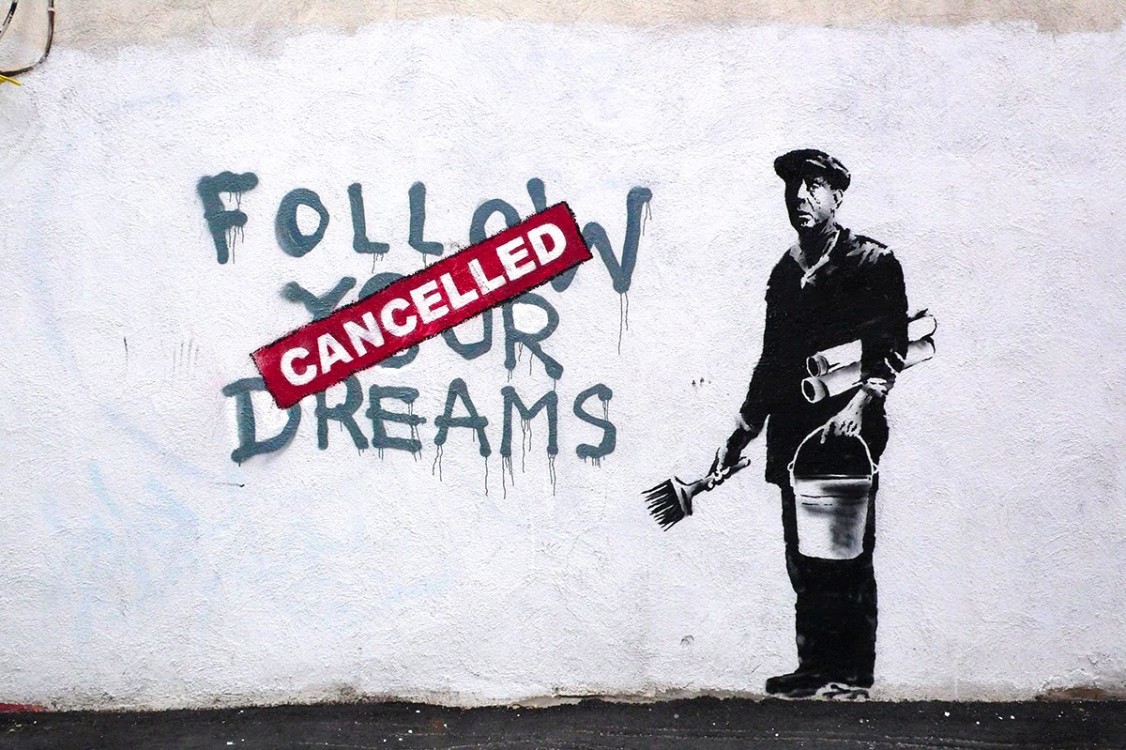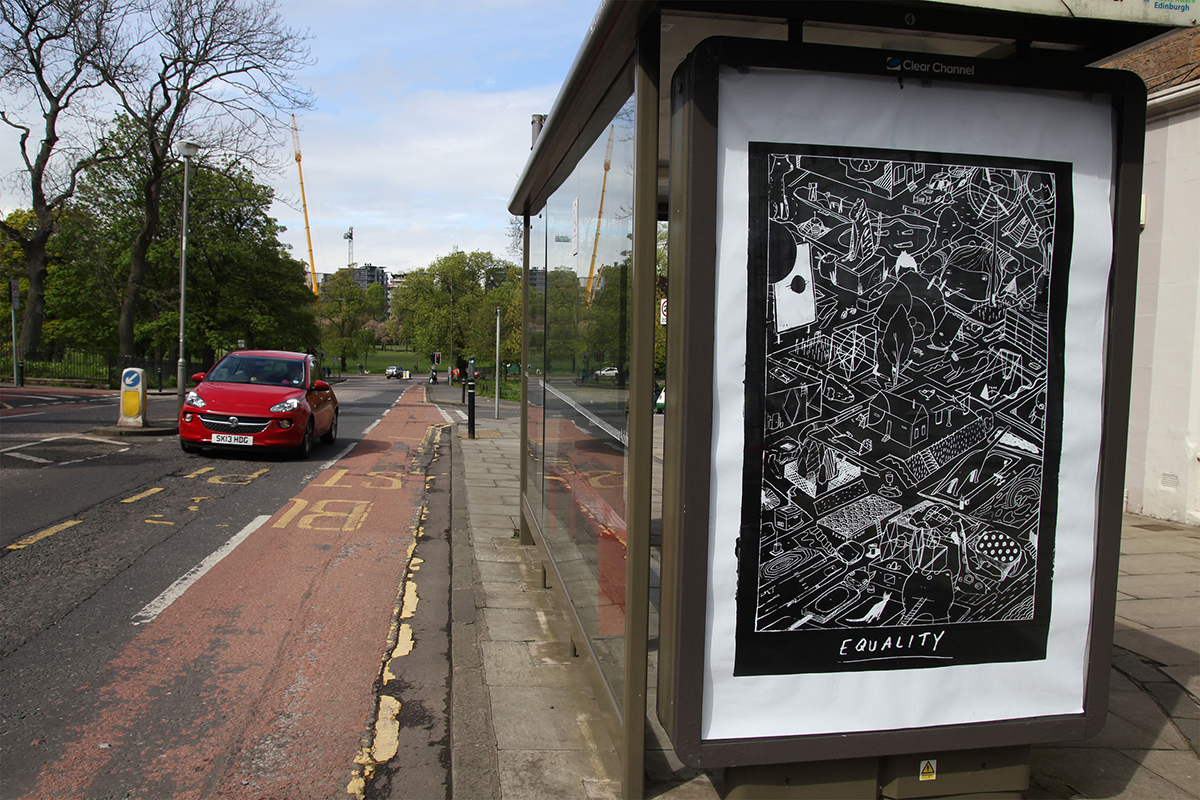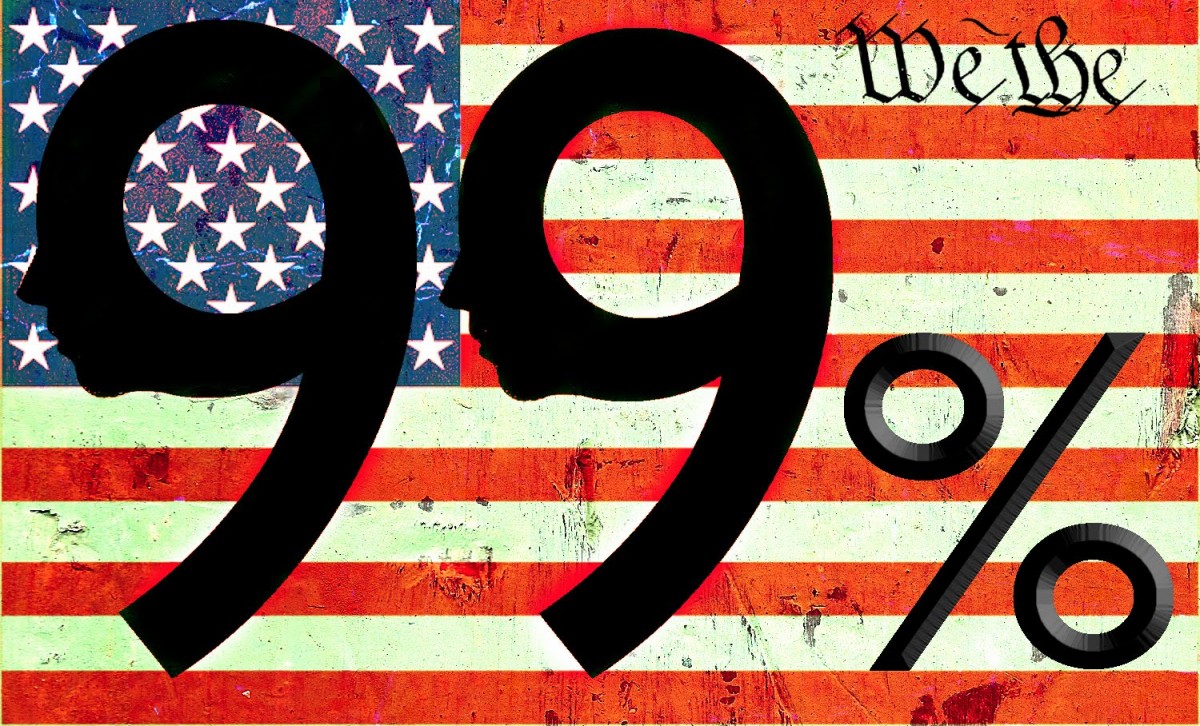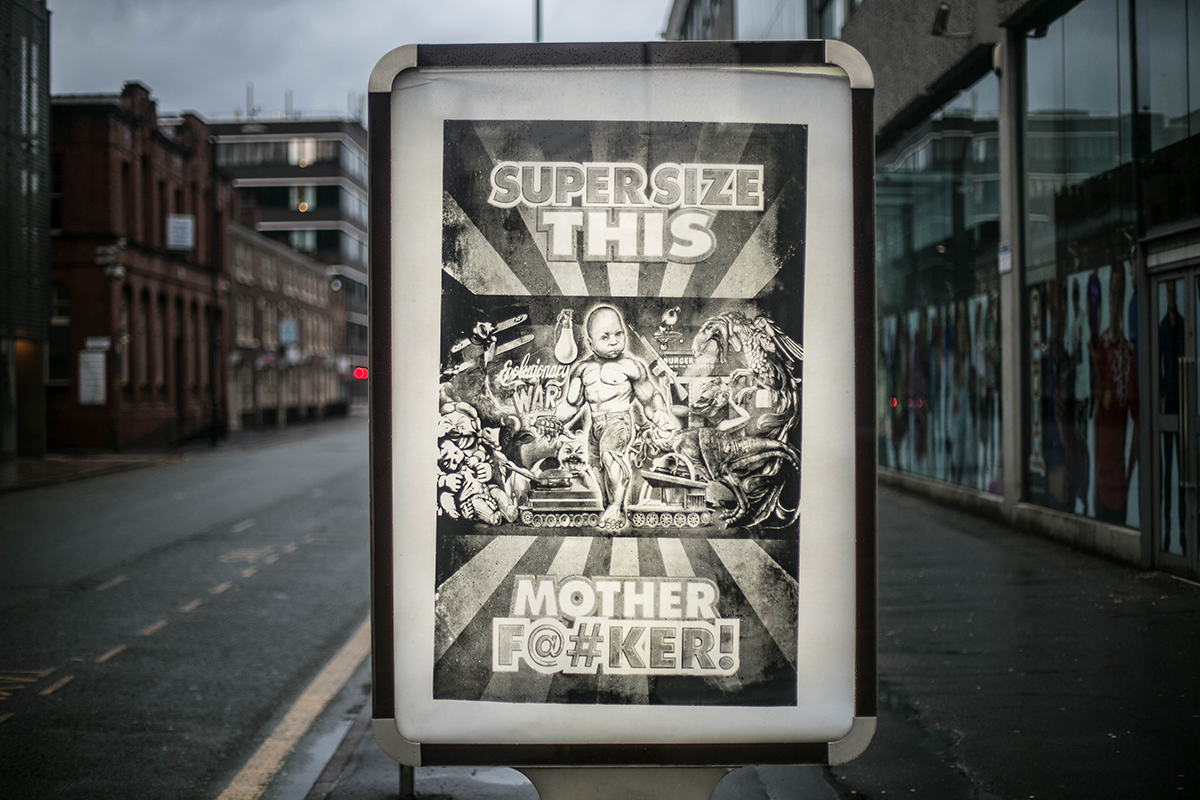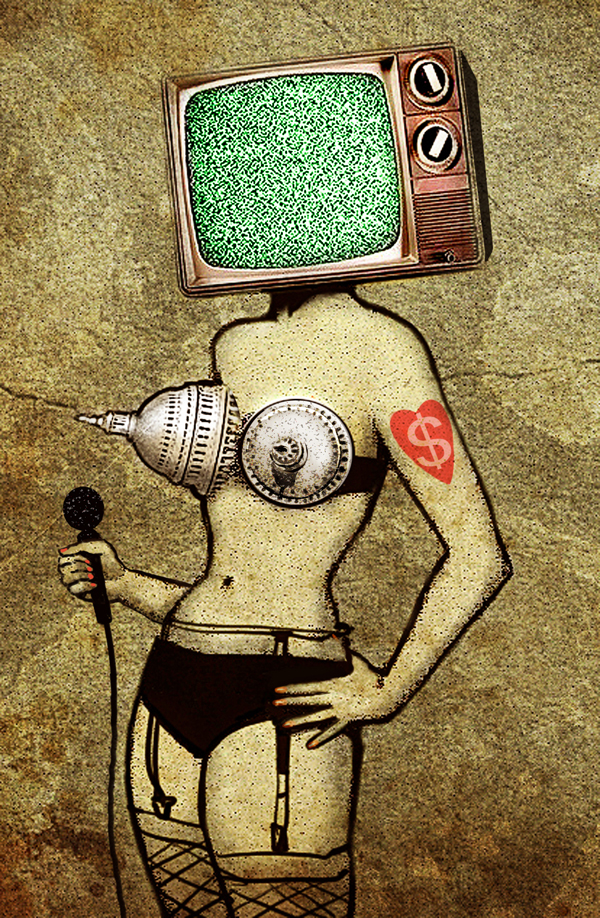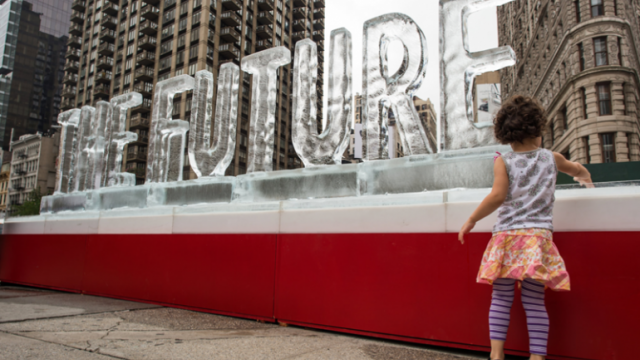
Political movements need art.
Think back to a colossal shift in our socio-political history as a country, and I guarantee there was an artistic push behind it. From Women's Suffrage posters in the late 19th century to the protest songs of the 1960s, to celebrities standing up for LGBT rights in the 2000s, pop culture has always played a role advancing the fight for justice and giving a voice to the voiceless.
Indeed, artists are the voice of their generation. Through art, they reflect upon the greatest issues of their time – putting them in the eyes, ears and minds of an engaged and entertained populace, and creating a lasting impression to educate and inspire future generations.
Art has the unique ability to combine reach and staying power because it is an inclusive medium. It brings people together across the social, political and economic spectrum, with no calls for prerequisites or qualifications. It's “come as you are,” and be moved. Art's staying power, not just in politics but in the human experience of it, comes from the space it reaches in our soul and mind. Art you made, art you saw, heard, were a part of. It's the laugh at a joke, the tears pulled by seeing a picture, the soul wrenching, heart lifting melodies of a song. It's the ability to change moods, shift paradigms – and in the case of political art, to push for justice and social advancement.
While the relationship between mainstream art and politics hasn't always been a harmonious one, there have always been artists – from street artist obscurity to underground punk and hip hop to mainstream Bob Dylan – who give voice and attention to activism through their art.
These days, there's no shortage of visual or audio stimulus, from the vapid to the vehemently political. In fact, the whirlwind of sensory overload is a defining factor in how we access our own generation's political engagement – and may help explain why there's not more emphasis placed on political art and political movements.
Digging back into the past for a moment, let's look at the most obvious period of parallels0 between pop culture and politics: the 1960s. Fifty years ago, the mainstream art world had a finger squarely on the pulse of politics and was swift to comment, create and organize dissent. The youth of that generation were plugged in – because it was cool to be plugged in and because it was easy to be plugged in.
Without taking anything away from the brilliant artists and activists who combined to create a political pop culture movement, figures in the 1960s had platforms and outlets that made it relatively easy compared to today. There were one or two radio station for all genres. There were one or two TV channels where counterculture consistently clashed with the suits and ties of corporate America. The Doors on American Bandstand, anyone? When Bob Dylan came out with a new song, Motown fans knew just as well as the hippies.
This cohesion made it a lot easier to spread and access politically charged art and music. Political movements and the artists behind them were in the media, centered in the pop culture framework. In many ways, art and politics weren't mutually exclusive entities. They shared the same outlets, the same space and path to people's everyday lives.
Fast forward to today when there are thousands of TV channels, not to mention Internet TV and shows. Every genre and many sub-genres have their own radio stations, and that's also not mentioning Internet radio. Mainstream media, meanwhile, has become little more than infotainment wrapped in fear-mongering.
Politically speaking, a cloud of apathy hangs over much of today's youth – perhaps no more apparent than in the atrocious voter turnout in the 18-24 age range. In 2012, only 41.2% of registered voters 18-24 showed up at the polls for the presidential elections. 71.9% of registered voters 65 and over showed up.
Now, this isn't Katy Perry's fault, but I guarantee that if she and celebrities like her were politically engaged, you'd get at least another percentage point out of that 41.2%.
Also, keep in mind that the number refers to "registered voters." A 2009 Project Vote Study found that “as of November 2008, fewer than half (49%) of the 3.7 million 18-year-old citizens were registered to vote, a rate 22 points lower than the general population.”
So that means less than half of the less than half of registered 18- to 24-year-olds actually cast a vote. These numbers are significantly lower than in the past. In 1964, nearly 80% of young voters went to the polls. And that was before the 26th Amendment passed in 1971, giving 18-year-olds the right to vote.
Most frustrating perhaps is the fact that 18- to 30-year-olds have the most to lose from political apathy – yet they are the most apathetic. And meanwhile, corrupt corporate-shaped government forges ahead like a virus feeding off the apathy of its host.
Coming to meet this apathy is art. Art is a remedy. It's the backstage pass, your way into the most apathetic of minds. It can make politics seem cool, chic, trendy, even sexy. And this generation needs that. Until political movements have a pop culture presence and voice, the bulk of today's youth won't plug in. And until they plug in, political movements will be in a fight weighed down by widespread apathy.
In this context, what artists and organizers must do is combine their powers and create content that is just as entertaining and engaging as the mainstream. This means using the platforms we have available to us. Many people our age, after all, created those platforms. Alternative media outlets like this one and the ones mentioned in my prior article can also take on the vapid culture of mainstream media.
The point is this: we must find creative ways to use these platforms and create a digital and physical space of movements, powered by art.
Take a cue from the consumerist advertisers and put out your own ads, like Adbusters has done. Take the catchy, cathartic release of rock and hip hop like Rebel Inc. and use it to spread an incendiary message of political activism.
Use comedy like the Yes Men, John Oliver or Lee Camp to raise awareness and make people laugh. Do street theater like Backbone Campaign and put it up for everyone to see online.
Some of these organizations and others listed below do activist training to help activists and organizations increase visibility and outreach through creative means. If you're an artist, hook up with these organizations and others to plan events. This may be a lofty example, but hip hop artist Immortal Technique performed at the Climate Convergence in NYC last month.
Tom Morello was recently honored and then performed at a California Courage Campaign event, not to mention that he's a pretty visible character in the activist community.
Alone, we may only have a few thousand followers. But if you take a bunch of bands, plus a bunch of organizations, each with a few thousand followers, you can break through the din of mainstream chatter effectively and with long-lasting results.
The same goes for visual art. Street art is growing and political artists – from the well known Shepard Fairey to the lesser known but highly political Mear One – are showcasing their art everywhere from billboards and the sides of buildings to films and art galleries.
If you're not an artist, find creative ways of spreading the word. Use art as an incentive to bring people together, produce shows, events, get togethers, pot lucks. Screen films, do a podcast, make a news show. Grab a light projector and throw up some politically charged messages on a bank or a federal building.
Art may never again be so tightly intertwined with politics as it was in the 60s. But it need not be to have an outsized impact. It's unlikely that 73 million people will ever be watching the same band on TV like they did when the Beatles played the Ed Sullivan show. Nevertheless, an underground movement with strong presence on both digital and physical platforms can move the strongest of foundations.
In the aforementioned Women's Suffrage movement, posters and pamphlets passed from hand to hand turned a quiet issue into an underground mainstream, flooding to the forefront of political and social discourse.
Art needs to find that flow again. For the sake of a generation drowning in apathy, political art must give rise to the paradigm of politically chic, trendy, “in.”
The creative energies of our generation must speak out for justice and against corruption. As Bertrand Russel wrote in Political Ideals, “What we shall desire for individuals is now clear: strong creative impulses, overpowering and absorbing the instinct of possession; reverence for others; respect for the fundamental creative impulse in ourselves.”
Check out these sites where art and activism meet, and see where they take you:
Eleanor Goldfield is a creative activist, writer and singer. Her hard rock band, Rooftop Revolutionaries, is a primary force behind her drive to get money out of politics and engage her generation through entertainment. She also does freelance writing and freelance consulting for organizations and non-profits on event production and outreach via Art Killing Apathy.
3 WAYS TO SHOW YOUR SUPPORT
- Log in to post comments

